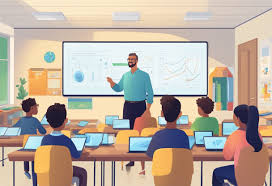The integration of science, technology, engineering, arts, and mathematics (STEAM) into early education has been revolutionized by the creative teacher who recognizes the unique potential of kids animated shows to introduce complex concepts in accessible, engaging ways. The visual nature of animation makes it particularly well-suited for demonstrating scientific principles that might otherwise remain abstract and difficult for young minds to comprehend.
Animation’s ability to manipulate time, scale, and perspective creates unprecedented opportunities for science education. Processes that would be invisible to the naked eye or that occur over extended timeframes can be visualized through animation. Teachers report that these visualizations help children develop mental models of scientific phenomena that form the foundation for more advanced understanding as education progresses.
The apparent contradiction between cartoon physics and real-world physics creates valuable teaching moments. When Wile E. Coyote remains suspended in mid-air before falling, or when SpongeBob creates fire underwater, children intuitively recognize the humor in these impossibilities. Astute educators use these moments to discuss actual physical laws, turning entertainment into scientific inquiry through simple questions like “What would really happen?”
Mathematical concepts receive similar treatment in many animated programs, with patterns, sequences, counting, spatial relationships, and basic operations embedded within entertaining scenarios. Research indicates that children demonstrate improved mathematical thinking when abstract concepts are presented through concrete, visual examples that establish meaningful contexts for numerical relationships.
Engineering principles appear regularly in problem-solving sequences where characters design, test, and refine solutions to challenges. These depictions model the engineering design process in accessible ways that young children can understand and emulate. Teachers build upon these examples by creating hands-on design challenges inspired by scenarios from familiar animated content.
Technological literacy develops naturally as children observe animated characters interacting with various technologies. While some depictions are fantastical, many shows incorporate realistic representations of technological tools and digital citizenship concepts. These portrayals help normalize technology as a tool for solving problems and expressing creativity.
The artistic elements of animation itself provide opportunities for STEAM integration. When teachers discuss how animation works—from traditional cel animation to modern computer-generated imagery—they introduce concepts related to persistence of vision, digital modeling, and the intersection of artistic expression with technological innovation. Some educators even guide students in creating simple animations as culminating projects.
Environmental science themes appear frequently in animated programming, introducing concepts like ecosystems, conservation, and sustainability. These presentations often incorporate emotional elements that help children develop personal connections to environmental concerns, creating foundations for scientific understanding that is linked to values development.
Diversity in STEAM fields is increasingly represented in newer animated content, with characters of various backgrounds portrayed as scientists, engineers, and innovators. This representation helps all children envision themselves in these roles, addressing long-standing issues with inclusion and representation in STEAM education and career pathways.
Assessment of STEAM learning through animated content often employs project-based approaches where children demonstrate understanding by applying concepts from animated examples to new contexts. This application-focused assessment better captures the interdisciplinary nature of STEAM education than traditional testing methods, while maintaining the engagement that animation initially sparked.

